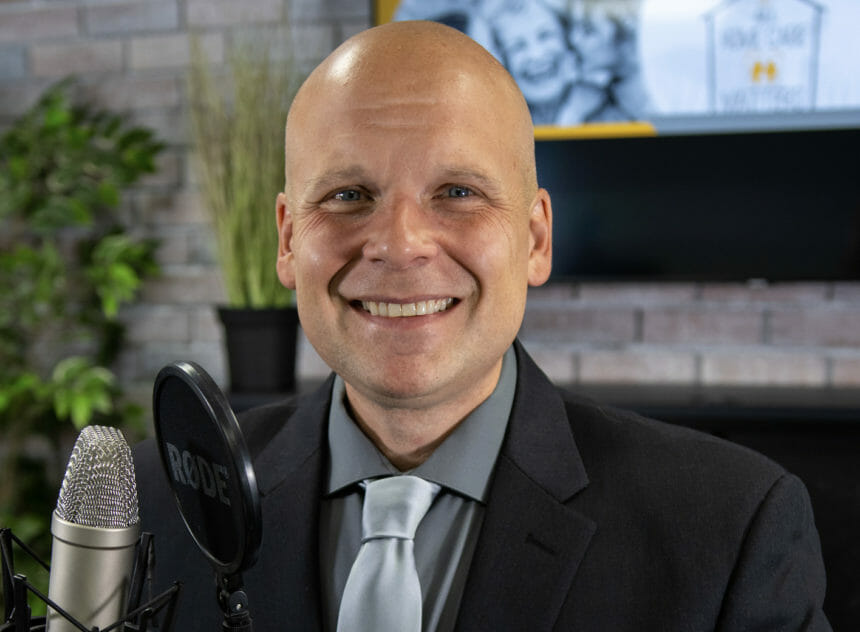
As caregiving providers and stakeholders, we are well aware of the increasing challenges we face due to the ongoing caregiver crisis. Following the pandemic, we’ve witnessed a sharp increase in terms of the need for care and a decrease in the number of caregivers available. Whether that be due to financial strain, a struggling economy, or otherwise, one thing is for sure: the crisis isn’t going anywhere anytime soon.
Looking ahead, the caregiver crisis is likely to intensify unless significant measures are taken to address the root causes. Currently, nearly 1 in every 5 Americans who provide care are going unpaid. With inflation on the rise, even those that are fortunate enough to be able to take on unpaid care positions may not be able to do so for much longer.
What we know for sure is that increased demand is to be expected. The aging population will continue to grow, resulting in an even higher demand for caregiving services. It is essential to prepare for this surge in demand by developing innovative solutions to bridge the gap between available resources and the needs of the elderly.
We might also anticipate an impact on the quality of care being provided. With the ongoing caregiver shortages and increased workload for those that are employed, there is an inherent risk of compromised quality of care. Overworked caregivers may find it challenging to provide personalized attention to each individual, which in turn can affect those receiving this vital care.
We’re also likely to witness an unprecedented strain on the healthcare system. The caregiver crisis is gearing up to have ripple effects on the broader healthcare system. Overwhelmed caregiving companies may struggle to collaborate effectively with healthcare institutions, leading to disruptions in patient care and potential strain on hospital resources.
What does the data show?
- A recent survey from Survival Coalition found that 62% of people needing care are concerned that they won’t be able to stay in their own homes or live independently. People around the country are feeling the anxiety and fear that comes along with this crisis.
- Research conducted by BCG shows that the United States could face a potential GDP loss of $290 billion in the year 2030 and beyond in the care economy if no improvements are made. This impact is sure to be felt by not only those in the caregiving space but the loved ones around them and future generations as well.
- The number of unfilled care jobs is sitting at 1.8 million, with numbers expected to rise rapidly.
Financial implications for caregiving companies
The caregiver crisis not only affects the well-being of individuals in need of care but also poses financial challenges for caregiving companies.
The constant need to recruit and train new caregivers due to high turnover rates can be financially burdensome for caregiving providers. These costs can significantly impact the company’s bottom line.
To meet the increasing demands, caregivers are regularly required to work overtime, leading to additional costs for companies. Furthermore, the risk of caregiver burnout can increase the likelihood of sick leaves and decreased productivity. This vicious cycle can cause an end result of turnover as well.
Finally, the inability to maintain a consistent and skilled caregiving staff can lead to a decline in client satisfaction and revenue. Reputation and trust are vital in the caregiving industry, and these frustrating caregiver shortages can severely impact a company’s reputation.
What strategies can we use to intervene?
Although tackling the caregiver crisis is a greater task than any one group can take on, collectively, we can begin to chip away at some of the broader issues that contribute to this pressing issue.
Companies that are equipped to do so can focus on increasing compensation for caregivers. The once adequate $15 per hour is no longer sufficient to both draw in employees and keep them. Providers can advocate for improved compensation and benefits for their vital caregivers, which will likely lead to improved retention rates.
Training and professional development can be increased as well. Providers should focus on continuous training and development programs to enhance caregivers’ skills and knowledge. This can help fill in the gaps where the sheer volume of care is lacking. Adequate training not only improves the quality of care but also enhances job satisfaction and career growth prospects.
We can also choose to embrace technology solutions to streamline caregiving processes and enhance communication between caregivers and clients. Newer technologies have been designed to help with remote monitoring and support, increasing efficiency and quality of care across the board.
Lastly, increasing public awareness is a strategy that can be employed to both recruit able caregivers and put pressure on policymakers. Awareness campaigns can be launched to shed light on the importance of caregiving and the pressing challenges faced by the industry.
As providers and stakeholders, the responsibility to tackle the caregiver crisis falls upon all of us. By understanding the underlying causes and potential consequences, we can implement targeted strategies to intervene effectively. Collectively, we can slowly but surely work to overcome the caregiver crisis and ensure a brighter future for those in need of care and the caregiving industry as a whole.
Lance A. Slatton is a senior case manager at Enriched Life Home Care Services in Livonia, MI. He is also host of the podcast All Home Care Matters, a podcast and YouTube channel. The channel earned the YouTube Creator Award for surpassing 100,000 subscribers. By subscribing to the show, you will gain access to a wealth of information and tips that can help you provide the best possible care for your loved one. Find it on Apple podcasts or YouTube at @AllHomeCareMatters.
References:



